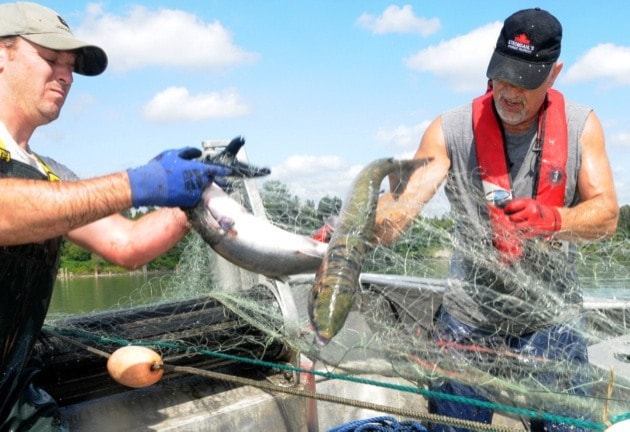Dangerously hot water temperatures in the Fraser River, combined with low river flows and unusually warm ocean conditions are conspiring to create a dire outlook for returning sockeye salmon.
And that could mean no fishing at all for the roughly 6.8 million sockeye projected to be on their way back to the Fraser to spawn – easily enough for what should have been a decent season.
"What's going on now is not good and I don't anticipate it being good in August," said Mike Lapointe, chief biologist for the Pacific Salmon Commission. "But it's just a matter of waiting to see where the indicators are at that time and making the decisions based on the evidence we have. I think the observed data is going to be pretty extreme."
He said it's "certainly possible" that sockeye fisheries will be severely curtailed or even cancelled altogether because a large proportion of the run may not survive to reach the spawning grounds.
A record low snowpack in the mountains this year has meant what little snow was in the alpine has melted off sooner than usual, leaving less to keep stream and river levels up and their temperatures down later in the summer.
Fraser River temperatures at Hope have already gone over 19 degrees in recent days, Lapointe said, when the norm at this time of year is less than 15 degrees.
"It's extremely warm," he said, adding the lower water flows compound the problem.
"It's like a bathtub. If you don't have a lot of water in it, it's really sensitive to the temperatures around."
High temperatures of 19 or 20 and higher can be deadly for salmon, which face more stress in their migration upriver to spawn, and they may also be more susceptible to disease.
"As soon as they start to reach these temperatures they're just not as efficient at migrating," Lapointe said. "It becomes harder for the fish to do the work they need to do."
The Pacific Ocean hasn't been kind to these returning sockeye either.
Northeast ocean waters up to the Gulf of Alaska have been unusually warm from late 2013 through 2014 – the entire time the now-returning sockeye have been at sea.
Warm ocean water can deplete plankton food supplies and sometimes results in many juvenile salmon being devoured by predator fish like mackerel coming up from much farther south.
Lapointe said he's heard reports of smaller salmon body sizes in Alaska, but there's no confirmation yet it will be the same story for Fraser sockeye.
The warm ocean tempeatures could impact not just this year's runs, but the next couple of years as well, he said.
Lapointe is also concerned the warm river temperatures are becoming a trend.
"Fraser summer temperatures have been getting warmer over time, not inconsistent with the sort of predictions you would get from climate change models."
He said different individual sockeye stocks may perform better than others in warmer conditions, depending on their past exposure.
More fishing may be possible for less desirable pink salmon, which return later in the summer.
Watershed Watch Salmon Society executive director Aaron Hill fears the river conditions will only deteriorate.
"The low water and high temperatures are combining to create lethal water conditions for salmon," Hill said. "Unless we get some rain it's just going to get worse and worse through the summer."
He's urging fishery managers not to authorize aggressive fisheries this year in order to put as many sockeye on the spawning grounds as possibler to ensure conservation of weak stocks.
